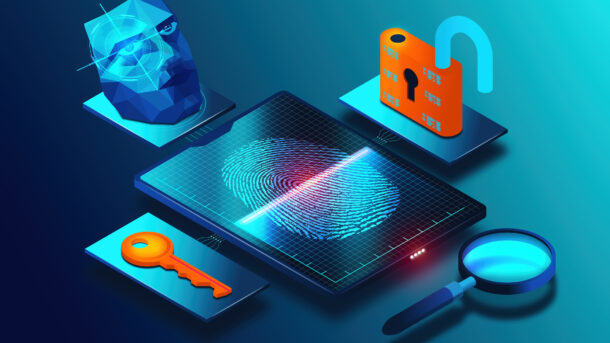For years, we’ve diligently built digital walls and gates, meticulously managing the identities of our human users. Then came the machines – the servers, the APIs, the IoT devices – and we adapted, creating new keys and new protocols for these non-human workers. We learned their languages, understood their predictable, programmed behaviours, and folded them into our Identity and Access Management (IAM) frameworks. But now, a new actor is stepping onto the stage, one that doesn’t just follow instructions but thinks, learns, and acts on its own. This is the era of agentic AI, and it’s about to shatter our conventional notions of digital identity.
We’re not just talking about another API key or a more sophisticated service account. Agentic AI systems are a fundamentally different class of non-human identity. To treat them as just another cog in the machine is not just a missed opportunity; it’s a security risk of unprecedented scale. It’s time to move beyond the binary of human vs. machine and recognize the dawn of a new identity category – the “agentic identity.”
From Programmed to Proactive: The Great Leap in Non-Human Identity
Think about a traditional API. It’s a reliable, if uninspired, employee. It does exactly what it’s told, following a predefined set of rules. You grant it access to a specific dataset, and it retrieves it. Its actions are predictable, its scope limited. Now, consider an agentic AI tasked with optimizing your supply chain. It doesn’t just follow a script; it analyzes real-time data, learns from market fluctuations, and makes autonomous decisions to reroute shipments, adjust inventory levels, and even negotiate with supplier APIs.
This leap from programmed execution to proactive decision-making is the crux of the issue. The key differentiators of agentic AI demand a new security paradigm:
- Autonomy and Unpredictability: Unlike a machine that operates within a narrow, predetermined scope, an agentic AI can devise novel solutions and take unexpected actions to achieve its goals. This inherent unpredictability makes static, rule-based access controls dangerously obsolete. How do you define permissions for a system that can creatively problem-solve in ways you never anticipated?
- Continuous Learning and Adaptation: Agentic AI systems are designed to evolve. They learn from their interactions and continuously refine their strategies. This means their access requirements can change dynamically. A marketing AI that initially only needed access to social media analytics might later determine it needs to interact with the customer relationship management (CRM) system to personalize campaigns. A fixed set of permissions would either stifle its potential or leave a gaping security hole.
- Complex Decision-Making and Agency: These AI systems aren’t just processing data; they are making judgments and instigating actions that can have significant real-world consequences. An AI-powered financial advisor that can execute trades on a client’s behalf holds a level of agency far beyond that of a simple banking app. Its identity and access rights must reflect this heightened level of trust and responsibility.
The Coming Identity Crisis: “Shadow Agents” and the Perils of Mismanagement
If we fail to recognize the unique nature of agentic AI, we risk a new wave of security threats. The rise of “shadow IT” in the cloud era will pale in comparison to the proliferation of “shadow agents.” Imagine business units deploying their own agentic AI systems without proper identity governance. These unmanaged, often over-privileged agents could become prime targets for malicious actors, leading to “agent jacking” – where an attacker hijacks an AI’s credentials and turns its powerful capabilities to their own nefarious ends.
Furthermore, the very nature of agentic AI makes traditional auditing and forensics incredibly challenging. How do you trace the actions of a system that can learn, adapt, and even cover its tracks in sophisticated ways? The digital breadcrumbs left by a conventional machine are clear and linear; those of an agentic AI could be a complex, branching path of emergent behaviors.
Forging a New Path: Towards an Identity-First Future for Agentic AI
So, how do we move forward? The answer lies in building a new IAM framework specifically designed for agentic AI, one that is as dynamic and intelligent as the systems it seeks to govern. This new approach should be built on a foundation of principles and standards like those discussed in the NIST AI Risk Management Framework.
Key components of this new model include:
- Verifiable Credentials and Decentralized Identifiers (DIDs): Instead of static API keys, agentic AI should possess their own Verifiable Credentials that attest to their capabilities, provenance, and authorized scope of action. DIDs can provide a secure and independent way to manage these identities without relying on centralized authorities, creating a more robust and flexible trust ecosystem.
- Just-in-Time (JIT) and Context-Aware Access: Forget about long-lived, standing privileges. Agentic AI should be granted access on a just-in-time basis, with permissions dynamically adjusted based on the specific task at hand and the current context. If an AI is negotiating a contract, it gets temporary access to the legal database; once the task is complete, that access is revoked.
- Continuous Authentication and Behavioral Analytics: We need to move beyond one-time authentication. By continuously monitoring an agentic AI’s behavior and comparing it to an established baseline, we can detect anomalies that might indicate a compromise. Is the AI suddenly accessing data it has never touched before? Is its decision-making pattern deviating from the norm? These are the new red flags in the age of intelligent machines.
- A New Class of “Agentic Identity”: Ultimately, we need to formally recognize “agentic identity” as a distinct category within our IAM frameworks. This means developing new policies, new standards, and new technologies that can accommodate the unique characteristics of these powerful new actors.
The rise of agentic AI is not a distant future; it’s happening now. The systems we are building today will have a profound impact on our digital world for years to come. By treating agentic AI as the unique and powerful entities they are, we can unlock their immense potential while ensuring a secure and trustworthy digital ecosystem for all. The conversation needs to start now, because the new cogs in the machine are not just turning; they are thinking.



